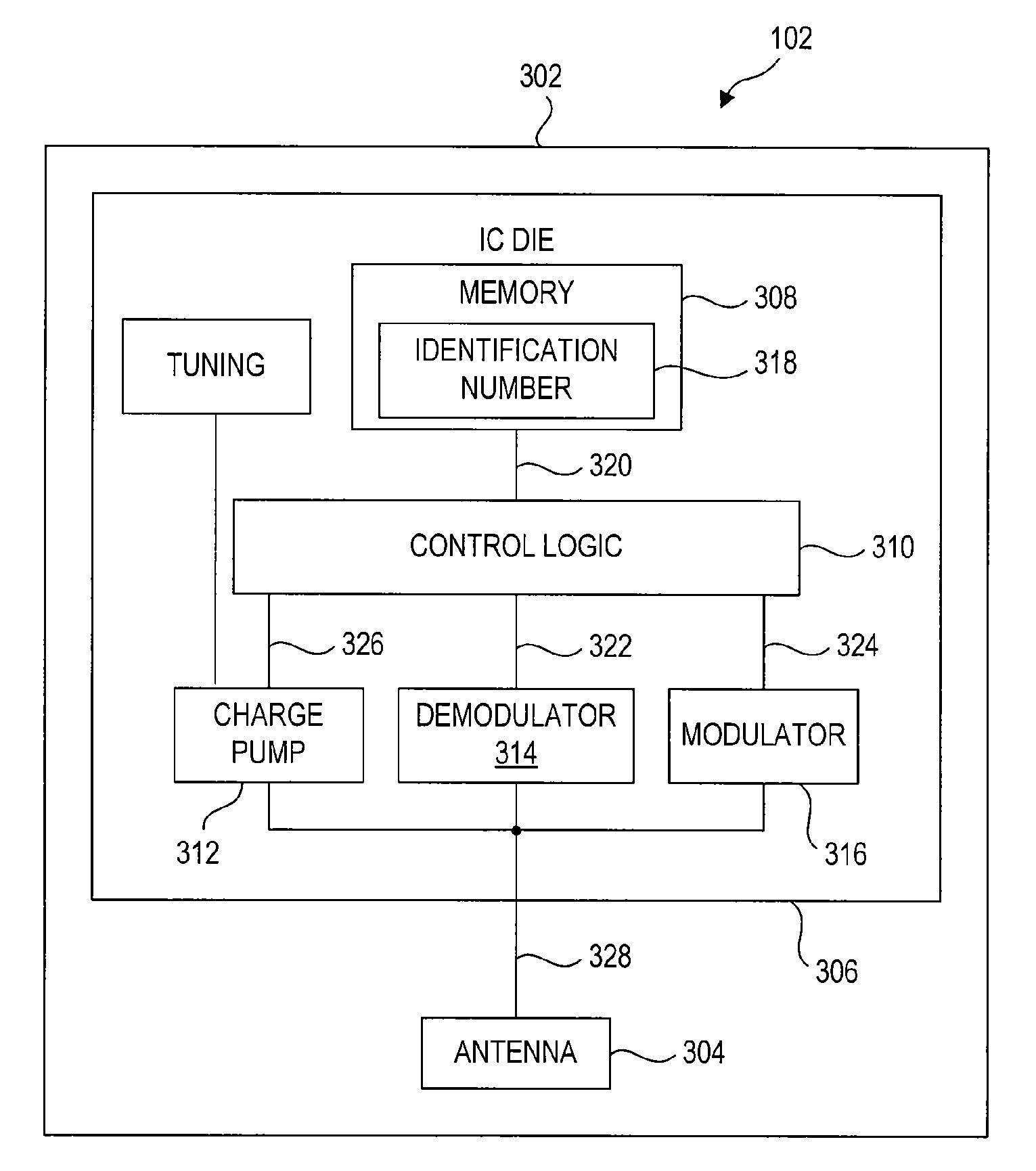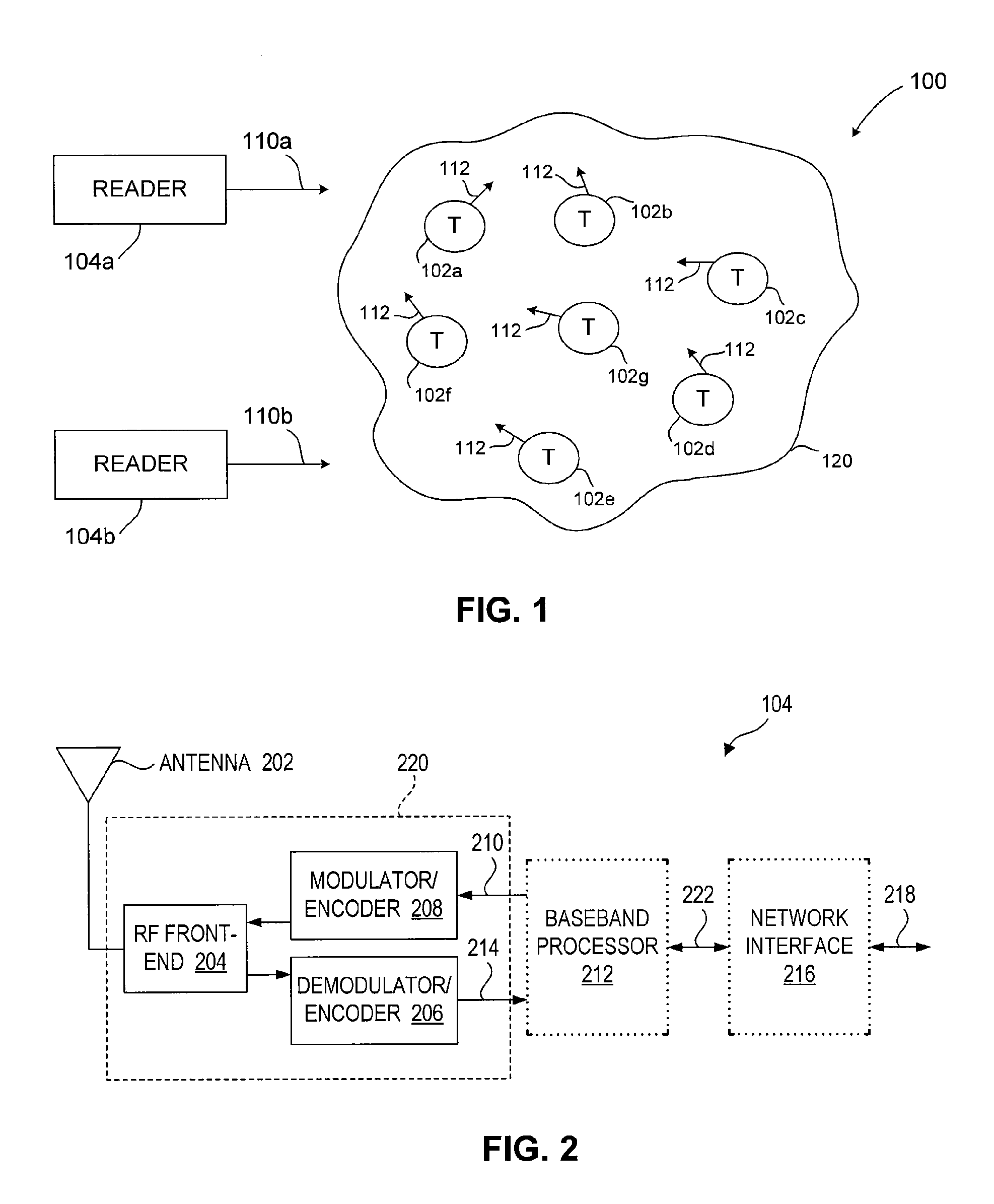Self Tuning RFID
a self-tuning, radio frequency identification technology, applied in the direction of memory record carrier reading problems, instruments, computing, etc., can solve the problems of difficult insertion of antennas into rfid tags, difficult antenna compensation, and inability to have good low vswr characteristics across the intended band of operation, so as to avoid obscuring the purpose
- Summary
- Abstract
- Description
- Claims
- Application Information
AI Technical Summary
Benefits of technology
Problems solved by technology
Method used
Image
Examples
Embodiment Construction
Exemplary Operating Environment
[0021]Before describing embodiments of the inventions in detail, it may be helpful to understand an example RFID communications environment in which the inventions may be implemented. FIG. 1 illustrates an environment 100 where RFID tag readers 104 (readers 104a and 104b shown in FIG. 1) communicate with an exemplary population 120 of RFID tags 102. As shown in FIG. 1, the population 120 of tags includes seven tags 102a-102g. A population 120 may include any number of tags 102.
[0022]Environment 100 includes any number of one or more readers 104. For example, environment 100 includes a first reader 104a and a second reader 104b. Readers 104a and / or 104b may be requested by an external application to address the population of tags 120. Alternatively, reader 104a and / or reader 104b may have internal logic that initiates communication, or may have a trigger mechanism that an operator of a reader 104 uses to initiate communication. Readers 104a and 104b may...
PUM
 Login to View More
Login to View More Abstract
Description
Claims
Application Information
 Login to View More
Login to View More - R&D
- Intellectual Property
- Life Sciences
- Materials
- Tech Scout
- Unparalleled Data Quality
- Higher Quality Content
- 60% Fewer Hallucinations
Browse by: Latest US Patents, China's latest patents, Technical Efficacy Thesaurus, Application Domain, Technology Topic, Popular Technical Reports.
© 2025 PatSnap. All rights reserved.Legal|Privacy policy|Modern Slavery Act Transparency Statement|Sitemap|About US| Contact US: help@patsnap.com



